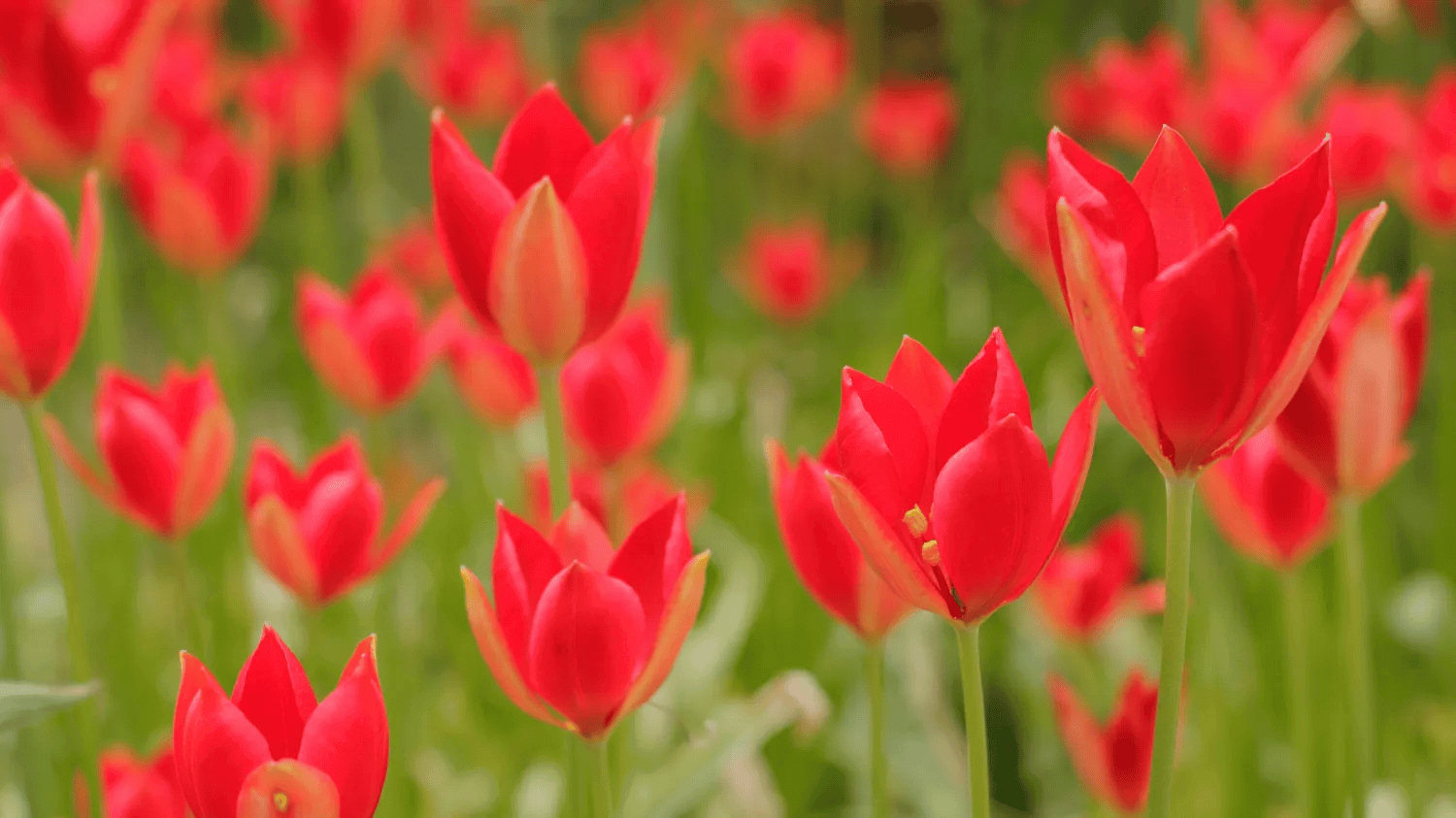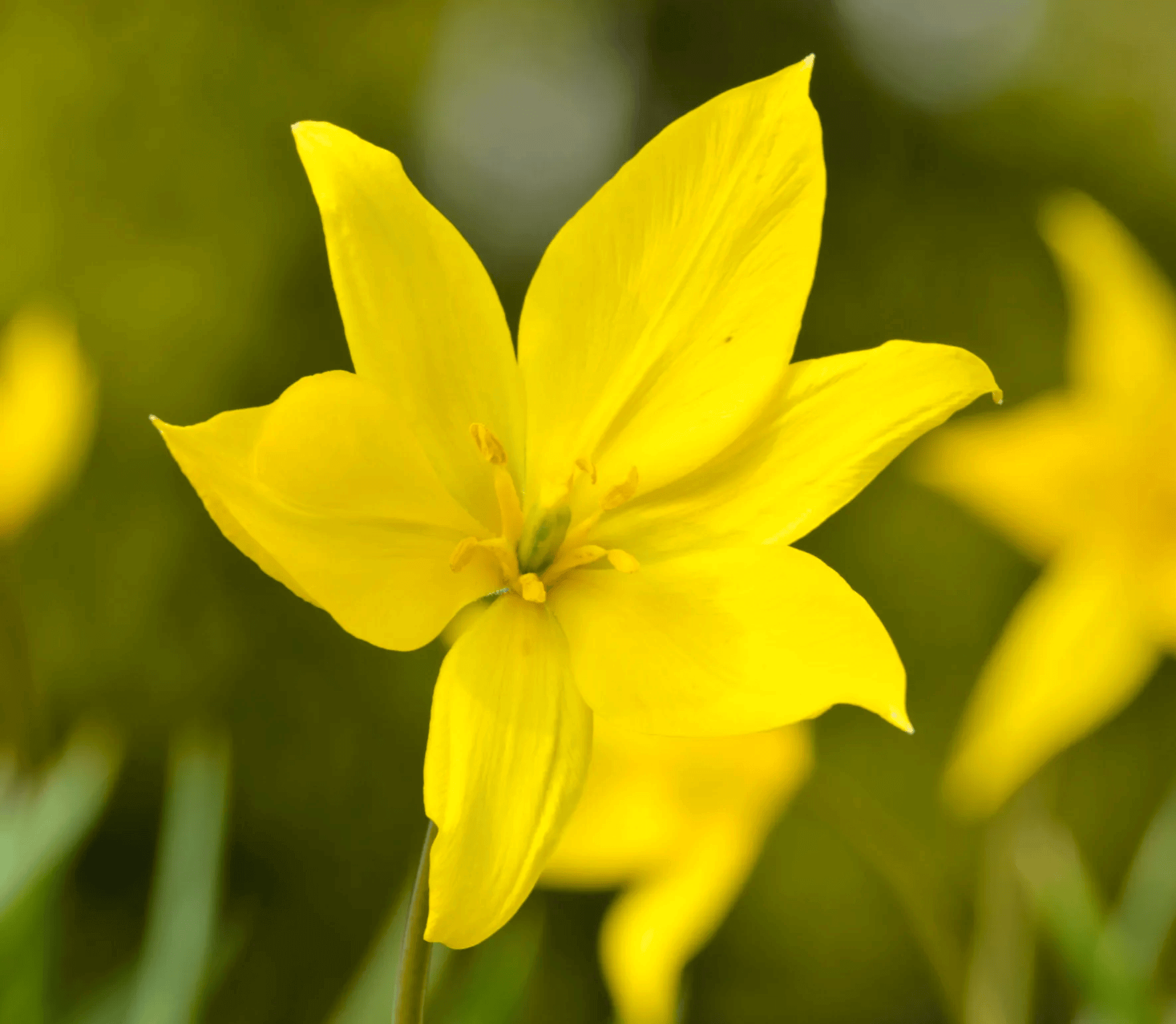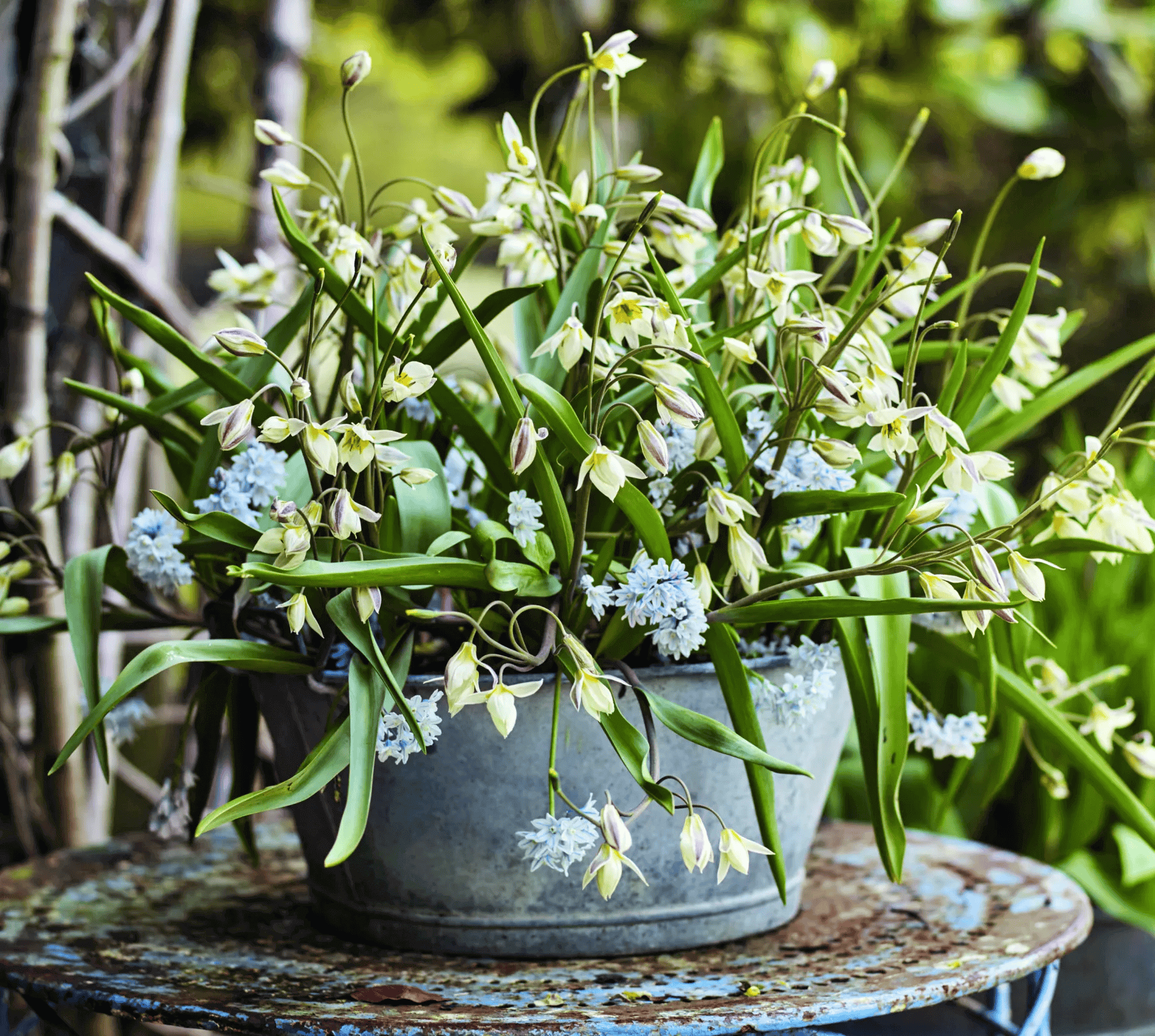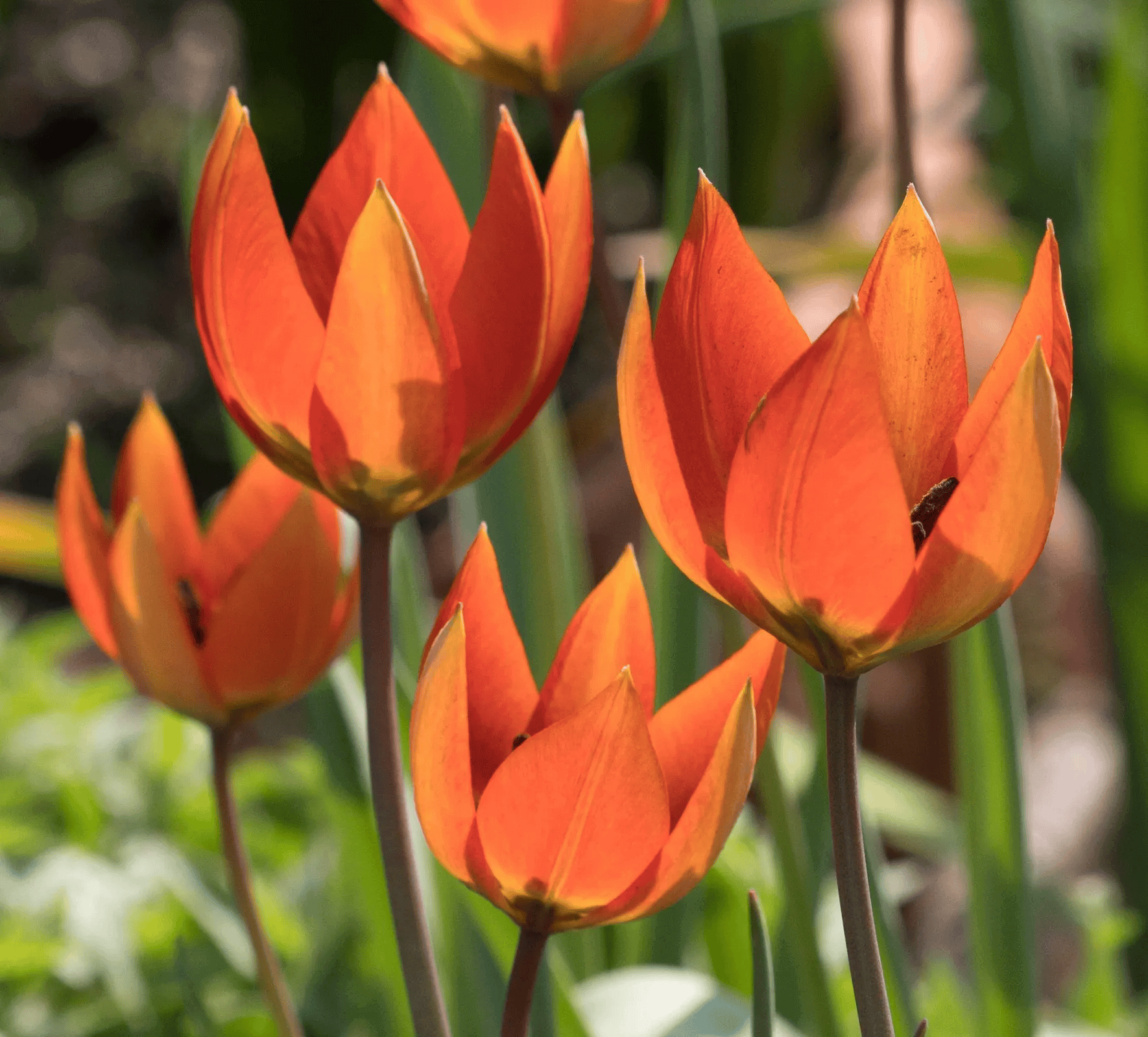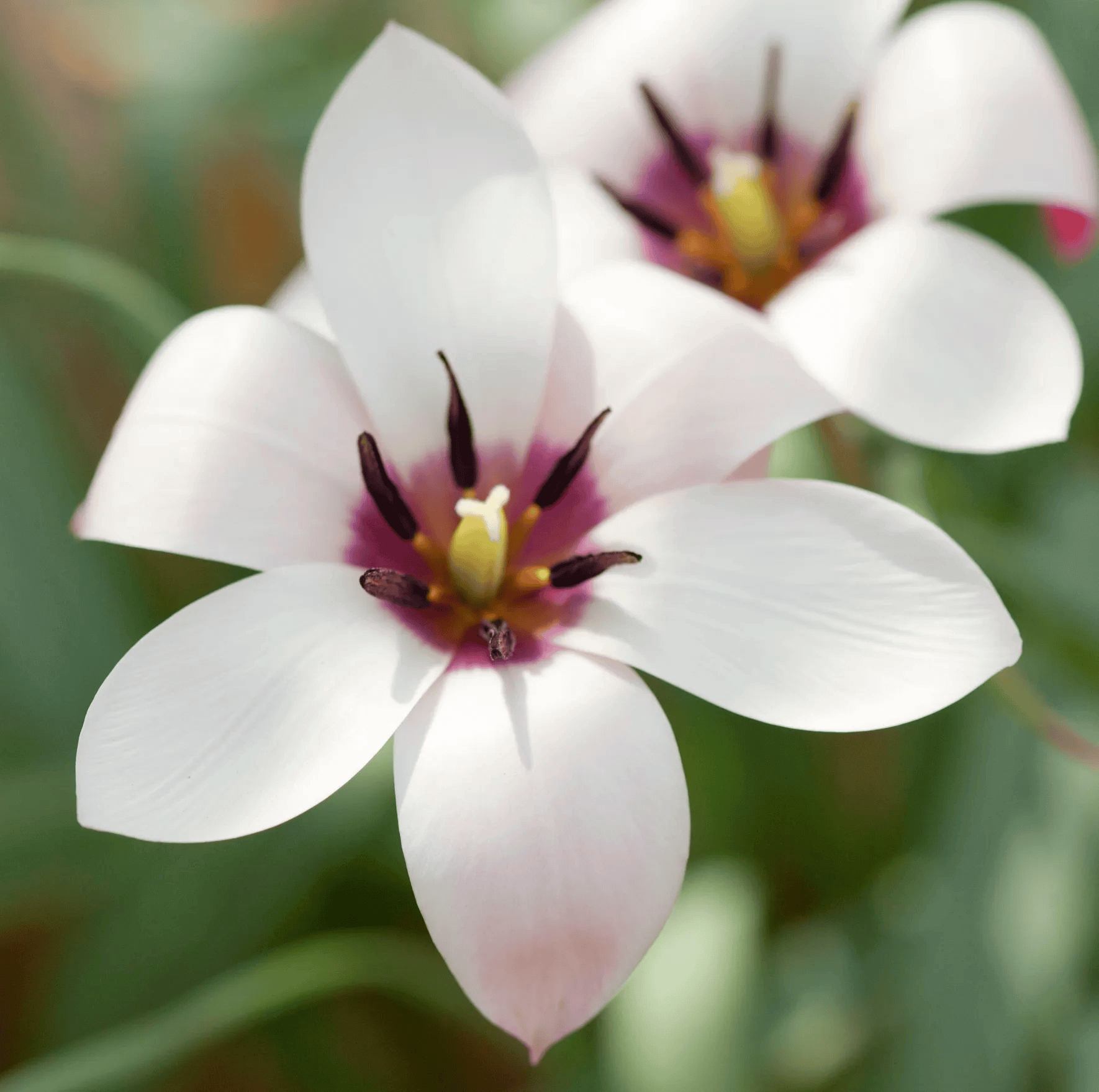The Times | The Wild Tulips Our Gardening Expert Loves
Ann Treneman
September 26, 2025
Sprenger tulips offer a zingy red to brighten up flowerbeds. ALAMY.
I wasn’t expecting that much from my visit this month to the Tulip Museum in Amsterdam — except a great gift shop, of course. Indeed, I thought it might be one of those “museums” where the shop would be the star and the rest something of an afterthought. Wrong. The museum was not only informative and inspiring, but also a bit of a hoot.
Most of it is underground, and I had just descended to the first room when I had a minor epiphany. There was a world map and the first photograph showed a farmer in Afghanistan, bearded and beturbaned, as he wrestled with a wayward grape vine, cutter in hand. Under the vine was a smattering of small red tulips, some of which were being trampled. They looked delicate but defiant, their jazzy red and white coats in sharp contrast to the grey sky and barren landscape. This was the lady tulip (Tulipa clusiana) in the wild in its native country.
The scene felt surreal, as if the flowers had been stuck on to the scene like tulip Post-it Notes. Thinking about it, I realised that I have never seen a tulip in the wild. In my mind, tulips live in borders, rows, pots and plots. They are stalwarts of parks, citizens of temperate climates, linchpins of the patio bulb lasagna. They were brazen and glamorous, colourful and frilly, stripy and flamboyant. They were not to be treated as weeds on a windswept highland.
I can already feel an obsession stirring here with wild or species tulips — and with seeing them in the wild. Who knows where this will end (probably visiting one of the ’stans I suspect). But first I can look closer to home (as in my own new garden) for it seems that I am not alone, and this autumn nurseries are reporting a surge in interest in species tulip bulbs.
“There’s been a huge explosion, I would almost put it like that, in species tulips,” says Polly Nicholson of Bayntun Flowers in Wiltshire and the author of The Tulip Garden: Growing and Collecting Species, Rare and Annual Varieties. She believes that it comes as gardeners become more aware of the waste in treating tulips as annuals. “We want bulbs in our gardens which are very happy and stay there.”
Other factors could be that the price of border tulip bulbs has gone up, in some cases notably, and the wet weather of previous years has resulted in outbreaks of the disease tulip fire. Whatever the cause, species tulips are very much on the up and have even won over the likes of the tulipophile gardener and cook Sarah Raven.
Raven is not shy about proclaiming her love. Species Tulips and Why You Should Grow Them This Year is the title of a podcast which is, basically, a gush. Species tulips, she says, compared with their far more flamboyant offspring, are healthier, more resilient, perennialise well and flower earlier. They look great in grass (just the right size) and naturalise well. They are also “perfect in pots”.
The exact figure is not known but there are 70 to 110 species seen in the wild, from the Himalayas through to Greece and Italy. They look delicate but, in their native environments, they are also tough survivors and are, more or less, weatherproof. I can hardly wait to order some for my garden and asked Nicholson, who also holds a national collection of historic tulips, for her recommendations.
Sprenger tulip (T. sprengeri)
Red goblet flowers. Nicholson plants them among her Benton End irises, enjoying the contrast of the zingy red among the muted muddy irises. Up to 50cm.
Wild tulip (T. sylvestris)
ALAMY.
The woodland tulip has buttercup yellow reflex petals and a lemony smell. Can grow in grass. Nicholson has hers in her woodland beds. Up to 25cm.
Turkestan tulip (T. turkestanica)
ANDREW MONTGOMERY.
Elegant flowers of ivory white with yellow and orange base. Up to 12 flowers per plant. Attractive seedpods. Nicholson grows them in gravel and says the squirrels stay away. Up to 30cm.
Late tulip (T. tarda)
ALAMY.
Yellow and white. Good under deciduous trees. Up to 15cm.
Whittallii group (T. orphanidea)
ALAMY.
Pointed burnt orange to red petals. Looks good with bronze fennel. Up to 30cm.
Tulip ‘Peppermintstick’
ALAMY.
Red and white lady tulip. Up to 30cm.
Tulip aximensis
ALAMY.
Red petals. Flowers late, into June. Good in grass. Up to 30cm.
T. clusiana var. Chrysantha
ALAMY.
The golden lady tulip, vibrant yellow inner petals with contrasting red exteriors. Great for containers. 25cms.
I give the last word to Vita Sackville-West who, in her 1951 book In Your Garden, declares herself a fan of the Lady Tulip. “I suppose her alleged femininity is due to her elegance and neatness, with her little white shirt so jimply [scarcely] tucked inside her striped jacket, but she is really more like a slender boy, a slim little officer dressed in a parti-coloured uniform of the Renaissance.” I’ll have some of those, please.
September 26, 2025 | The Times

